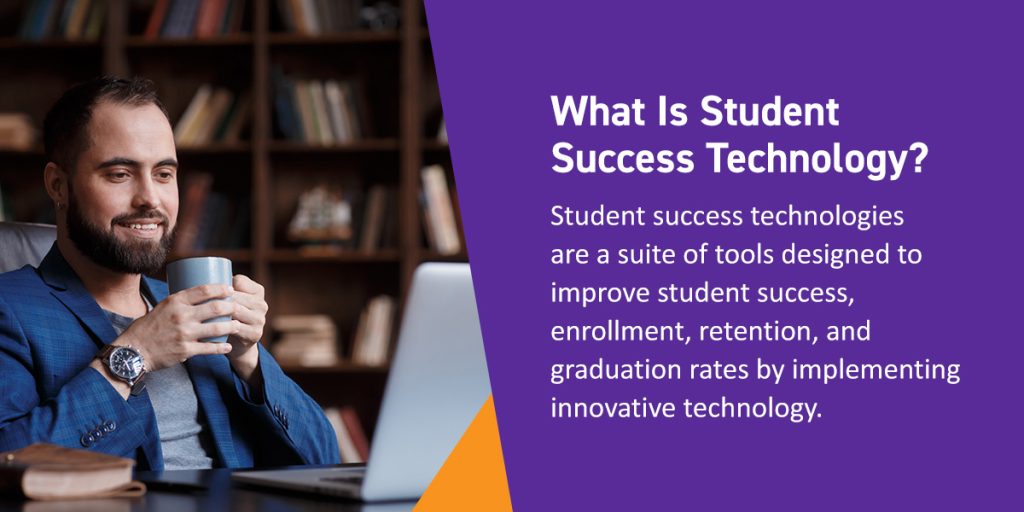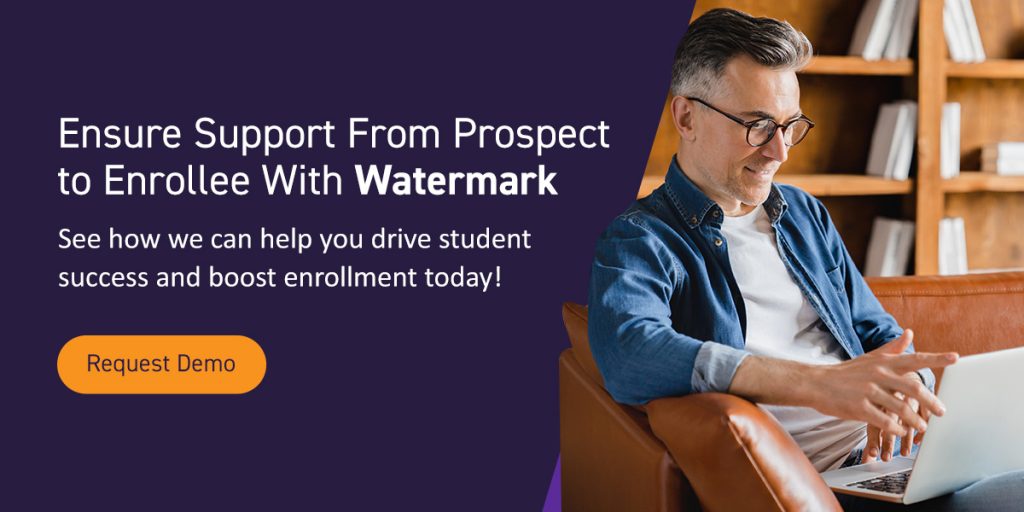




After a significant decline in student enrollments during the COVID-19 pandemic, they’ve settled into a steady decline. Higher education institutions must think outside the box to combat the effects of declining enrollment in higher education, and many are turning to student success technology to boost prospect engagement and eventual enrollment.
To combat declining enrollment rates, institutions must understand the underlying causes and act within their current framework to make changes that remind students of the immense value of higher education while simplifying laborious enrollment processes that could make them think twice.
There is no single catalyst for declining student enrollment. Instead, many contributing factors range from economic concerns like rising college tuition costs and student debt concerns to falling birth rates. The unprecedented changes in education brought about by the COVID-19 pandemic left students anxious and unsupported, and 16% of enrolled students canceled all plans to attend college during this period.
Many young people have chosen to enter the workforce rather than pursue a college education, as faith in the value of a college degree continues to wane. The abundance of post-pandemic positions in the workforce has simplified the transition. The earnings of college graduates are 84% higher than high school graduates.
Although declining enrollment has slowed since 2020, enrollment was declining pre-pandemic, and education professionals must devise creative ways to engage students to bounce back from the enrollment trends in recent years. Combatting the lack of value associated with higher education may not require an experimental approach but rather leveraging and improving existing systems.
Boosting enrollment has far-reaching benefits for students, educational institutions, and society. Much of the recent downward trend links to a shift in perceptions, and 52% of Americans no longer think young adults need a college degree to be successful. It, therefore, falls on the institutions themselves to add value to the college experience, and they must embrace technology and move alongside students in the digital world.
Institutions must meet student needs as they are today and align those with future goals to increase enrollment. Supportive, up-to-date programs based on the learning needs and preferences of students are essential. In addition, improving teaching outcomes, faculty collaboration, and staying current with the latest research tools for the classroom can foster higher enrollment.
Once students enroll, institutions must face the additional challenge of retaining them. The worst possible outcome for many students is an incomplete qualification with the accompanying student debt. Higher education institutions that lose students before they graduate must fund recruitment to combat the losses while losing tuition fees simultaneously.
Many of the tools institutions can use to boost enrollment can help retention efforts, and leveraging technology aligned with existing systems is a practical starting point in increasing enrollment.

Student success technologies are a suite of tools designed to improve student success, enrollment, retention, and graduation rates by implementing innovative technology. They help students in several areas, from connecting them to campus resources to managing deadlines and mapping their journey to degree completion.
Student success is vital for higher education, and leveraging technology meets students on their level to create a successful and enjoyable academic experience.
Using student success technology, you can improve student outcomes and experiences. As students work through their degrees, the institution can use student success tools to turn data into actionable insights and identify and engage with students who need your support. As your institution develops a reputation for supporting and engaging with students at all stages of their academic journey, your enrollments will likely increase.
In short, creating the ideal school experience from prospect to enrollee and beyond is essential to help enrollments climb. Student success technology boosts enrollment by allowing your institution to:
Attending a higher education institution must appeal to students on their level. Institutions must therefore digitize the student experience wherever possible, moving away from the traditional — and costly — bookstore model. Educators and administrators must work together to build an empowering curriculum, simplify the enrollment process, and cut student costs wherever possible.
Student success technology fosters collaboration, allowing educators to deliver the support students need for successful outcomes. Students may be less hesitant to enroll knowing they’ll receive the support they need to complete their studies.
The enrollment process should begin while prospects are still in the high school phase. Student success technology can ensure prospective students receive personalized communications from the first moment they engage with an institution and support students throughout the entire student lifecycle.
Gathering student data in the prospect phase provides advisors essential information about each student, giving them an idea of where prospects are on the road to enrolling and helping them facilitate the transition from candidate to enrolled student. Advisors can leverage this information when students enroll to support them in the first phases of their new academic journeys.
When institutions spend too much time searching for information, it interferes with the student experience. Student success platforms simplify processes for the user, making it easy to access student information and the tools to engage with students personally. Recruiters can use the recruiting app to access the recruiting tools they need to engage with prospective students.
Student success technology provides institutions with a centralized location to store prospect information. Institutions interacting with high school students can capture and upload their data to one place. When everyone has access to the same student information, it streamlines the enrollment process, limiting the number of times students must repeat the same information to different faculty members and allowing them to engage individuals instead of prospects.
Inconsistent communication methods can lead to prospective students receiving duplicate messages in different tones, impacting their overall feelings toward an institution. Using student success software allows institutions to communicate consistently to prospects and existing students while maintaining a personalized approach and relevant call to action.
An institution’s data is only valuable if you can turn it into actionable insights — a challenging process when that data exists on multiple platforms. Student success software facilitates transparent reporting from prospect to enrollee and provides actionable data on total term enrollments, prospect-to-applicant rates, and more. With clear and accurate data, institutions can identify what is working and what isn’t and make the necessary changes to boost enrollment.
Declining enrollment is challenging for all higher education institutions, but a drastic approach could harm institutional efforts to change their current enrollment status. Watermark Student Success & Engagement can help your institution identify how to make the most significant impact from prospects to enrollees, increase retention and engagement, and improve student outcomes throughout your institution.
Contact us to learn more or request an online demonstration and see how we can help you drive student success and boost enrollment today!






























































































































































































































































































































































































